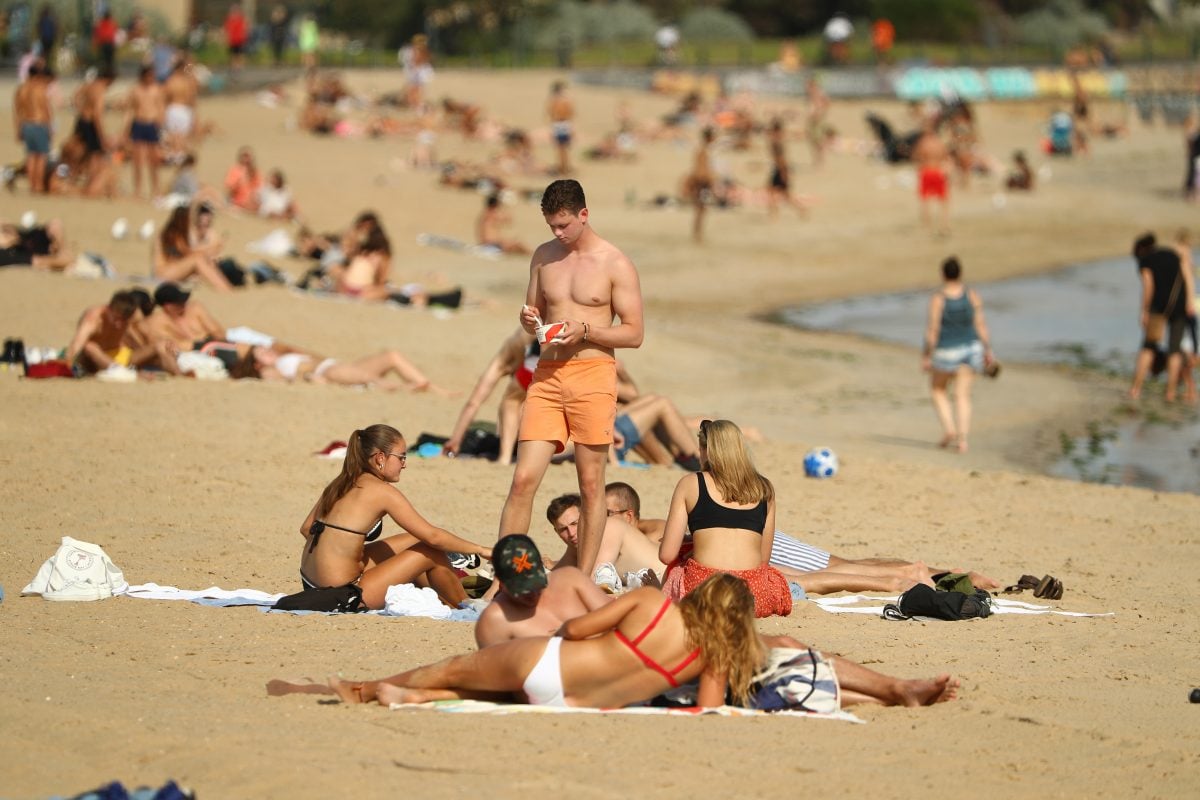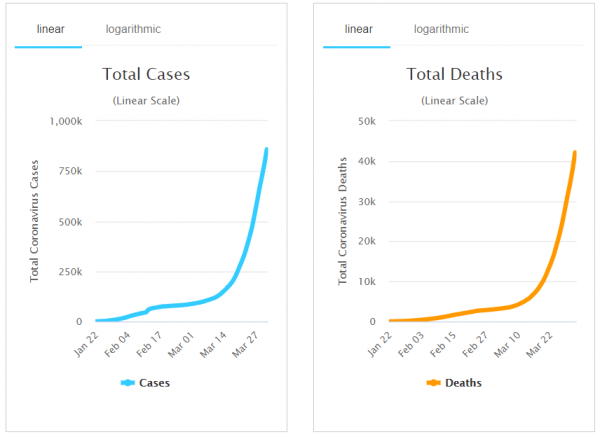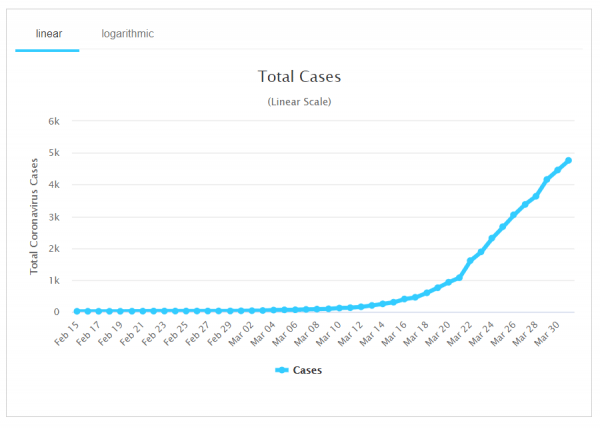
Right now, hundreds of millions of people all over the world are in lockdown. It is the largest quarantine in all of human history.
China, Italy, France, Denmark, El Salvador, Spain, Poland, Ireland, the UK and New Zealand have implemented restrictive mass quarantines, with dozens of other countries days or weeks away from likely having to make the same decision.
Here’s a breakdown of what’s going on
At last count, more than 858,892 people have been diagnosed with the coronavirus, and 42,158 have died.
What’s more concerning than the numbers themselves, is the rate at which cases are growing.
Just one week ago, 471,035 had tested positive, and 21,282 had died. To highlight – both these figures have almost doubled in seven days. Here’s what the graph currently looks like:






























































































